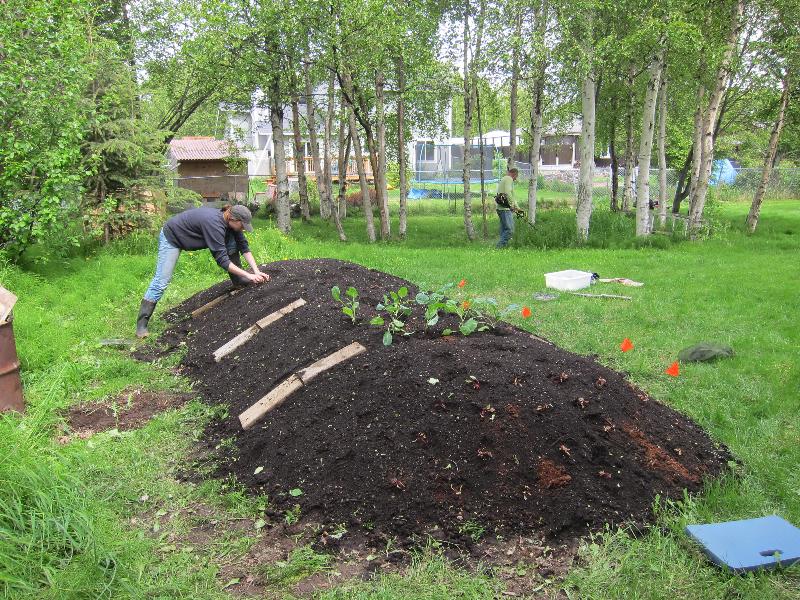
 9
9




 6
6




Sometimes the answer is nothing

 5
5





Striving to grow things as naturally, simply, and cheaply as possible! 
My YouTube channel
 4
4




Ben Zumeta wrote:I bet someone here can explain how dehumidifiers work like Dan Ackroyd as Jimmy Carter on SNL, but my understanding is that they can leave chemicals in their water reservoirs. I very well could be wrong, but I assumed this is why every one I've ever had has very clear warnings not to drink it, and that's why I don't use it on edibles
 6
6




This is all just my opinion based on a flawed memory

 18
18




Dale Ziemianski
d-alien.com
 6
6





 4
4




 2
2




Joshua Myrvaagnes wrote:
PSST. Hey dude, want some status updates?
*opens trench coat*
www.alexisrichard.com
 4
4




![Filename: 20190304_141808-480x640.jpg
Description: [Thumbnail for 20190304_141808-480x640.jpg]](/t/82803/a/73349/20190304_141808-480x640.jpg)
Sometimes the answer is nothing

 11
11




![Filename: 20190331_162748-480x640.jpg
Description: [Thumbnail for 20190331_162748-480x640.jpg]](/t/82803/a/74937/20190331_162748-480x640.jpg)
Sometimes the answer is nothing

 2
2




wayne fajkus wrote:I saw a hugel hack on "deep south homestead" youtube channel.
When planting tomato transplants, he digs a 16" hole and places 4 or 5 corn cobs(from last season) in the hole. He adds a little dirt and plants tomatos above that. The benefit he touted was its ability to hold water.
To lead a tranquil life, mind your own business and work with your hands.
 4
4




$10.00 is a donation. $1,000 is an investment, $1,000,000 is a purchase.
 2
2




Cécile Stelzer Johnson wrote:Asparagus must be planted deep and seem to attract lots of weeds. Rather than fight with the weeds, I will inter-plant with strawberries, which are shallow rooted but will eventually make a tight mat through which the asparagus will come up. The 50 asparagus plants have been planted in 4 beds [each 3'X 12']. They are mulched heavily with chicken do-do.
To lead a tranquil life, mind your own business and work with your hands.
 4
4




Mandy Launchbury-Rainey wrote:
Cécile Stelzer Johnson wrote:Asparagus must be planted deep and seem to attract lots of weeds. Rather than fight with the weeds, I will inter-plant with strawberries, which are shallow rooted but will eventually make a tight mat through which the asparagus will come up. The 50 asparagus plants have been planted in 4 beds [each 3'X 12']. They are mulched heavily with chicken do-do.
Another great tip. Do you have any pictures yet please? And you can never have too much comfrey. Or rhubarb.
$10.00 is a donation. $1,000 is an investment, $1,000,000 is a purchase.
 3
3




Ben Zumeta wrote:I bet someone here can explain how dehumidifiers work like Dan Ackroyd as Jimmy Carter on SNL, but my understanding is that they can leave chemicals in their water reservoirs. I very well could be wrong, but I assumed this is why every one I've ever had has very clear warnings not to drink it, and that's why I don't use it on edibles:
Your friend isn't always right and your enemy isn't always wrong.
 4
4




Eric Hanson wrote:I think my best permaculture hack is also one of the simplest. I like to build a compost pile in the garden. Even if the compost is not high quality, the nutrients flow down the pile and into the soil. Moreover, the microbes in the pile work their way into the soil along with the nutrients. Even if the eventual compost is only of so-so quality, the spot upon which it sits is magically fertile.
Eric
 5
5




We really don't know how much we don't know.
 5
5




 4
4




Jotham Bessey wrote:I am experimenting with planting cool season crops in late fall when the soil gets too cool for them to germinate. They sit there all winter and germinate in the spring when weather warms. Works for parsnip, carrot, turnip and rutabaga so far.
 9
9




 2
2




Sometimes the answer is nothing

 3
3




 3
3




Mandy Launchbury-Rainey wrote:
Cécile Stelzer Johnson wrote:Asparagus must be planted deep and seem to attract lots of weeds. Rather than fight with the weeds, I will inter-plant with strawberries, which are shallow rooted but will eventually make a tight mat through which the asparagus will come up. The 50 asparagus plants have been planted in 4 beds [each 3'X 12']. They are mulched heavily with chicken do-do.
Another great tip. Do you have any pictures yet please? And you can never have too much comfrey. Or rhubarb.
$10.00 is a donation. $1,000 is an investment, $1,000,000 is a purchase.
 8
8




Some people age like fine wine. I aged like milk … sour and chunky.
 4
4




John F Dean wrote:I managed to score some food grade 55 gal drums. I packed them with wasted hay, straw, leaves, etc. It has rained heavily all winter here. The drums were foll of water. I skimmed off the water for tea for the garden. I then topped off the raised beds with the remaining black compost.
$10.00 is a donation. $1,000 is an investment, $1,000,000 is a purchase.
 1
1




 2
2




 3
3




Dale Ziemianski wrote:I've been gardening in the weeds.
We had our blueberry plants get overrun with weeds one summer to the point we lost a couple. No they didn't die.... We freakin' lost them. Couldn't find them. After hacking down a bunch of Johnson grass and goldenrod and blackberry bushes that didn't produce well, we found them again, and they were healthier than the ones we had exposed earlier. It's as if they were nourished and protected by the weeds.
We had a good harvest. Finding veggies was like a treasure hunt that never ended, and I could never bring enough containers to harvest everything.
I think my next design will include covering the ground with a thick, lofty layer of sticks so the tomatoes, when they bog down the tomato stakes, will stay off of the ground and stay dry. Some rotted from all the humidity so I may cut the southern weeds down a bit lower in summer also... Just to eliminate the excess humidity.
 2
2




Joshua Myrvaagnes wrote:for yogurt-making(not raw--i'm not in charge)--you take the water from the two big mason jars that are for the thermal battery* and use those to cool the milk (put them in a large pot, put the heated milk pot into the larger pot and wait). Then take that same water, now hot, from the larger pot, put it back in the big mason jars, and voila, you have hot water to be the thermal battery for the yogurting process.
 2
2




wayne fajkus wrote: Horse manure is scooped, added to a manure spreader, and spread on my pastures. A lightbulb lit. Why not add seed into it and get a 2 for 1.
 4
4




Earthworks are the skeleton; the plants and animals flesh out the design.
 4
4




My tree nursery: https://mountaintimefarm.com/











 2
2




Dale Ziemianski wrote:I've been gardening in the weeds.
We had our blueberry plants get overrun with weeds one summer to the point we lost a couple. No they didn't die.... We freakin' lost them. Couldn't find them. After hacking down a bunch of Johnson grass and goldenrod and blackberry bushes that didn't produce well, we found them again, and they were healthier than the ones we had exposed earlier. It's as if they were nourished and protected by the weeds.
So last spring I decided I would run with it. I started by laying out the cardboard and straw to keep the weeds at bay a little, then planted in between the cardboard.
As the weeds grew up past the tomatoes and peppers, I only chopped and dropped the weeds that were on the south sides of the plants I was growing for food, just enough to let the sun hit them. I let the ones on the north side grow up tall. They ended up supporting the tomato plants and even some smaller viney squash.
From outside the garden it just looked like a weed patch. The critters thought so too. The only food that was stolen was from the plants on the outer edges of the garden.
Later in the season I noticed the Japanese beetles were ignoring the tomatoes and peppers and only eating the surrounding weeds.
The weeds held in the moisture, protected the plants from too much exposure and I think even helped to feed them. The smell when you bent down into the weeds was rich. I never had to water at all, even in the dry summer.
We had a good harvest. Finding veggies was like a treasure hunt that never ended, and I could never bring enough containers to harvest everything.
I think my next design will include covering the ground with a thick, lofty layer of sticks so the tomatoes, when they bog down the tomato stakes, will stay off of the ground and stay dry. Some rotted from all the humidity so I may cut the southern weeds down a bit lower in summer also... Just to eliminate the excess humidity.
Earthworks are the skeleton; the plants and animals flesh out the design.




Some people age like fine wine. I aged like milk … sour and chunky.
 3
3





 3
3




Community Building 2.0: ask me about drL, the rotational-mob-grazing format for human interactions.









Kevin Carson wrote:My own yogurt-making hack, when the weather is sunny and warm enough, is to put the jug of fermenting milk in my truck with the windows rolled up.
Joshua Myrvaagnes wrote:for yogurt-making(not raw--i'm not in charge)--you take the water from the two big mason jars that are for the thermal battery* and use those to cool the milk (put them in a large pot, put the heated milk pot into the larger pot and wait). Then take that same water, now hot, from the larger pot, put it back in the big mason jars, and voila, you have hot water to be the thermal battery for the yogurting process.
Makes sense. I just ferment at room temperature these days, it takes longer but it comes out a little sweeter and tastier. I don't bother heating the milk since now I have raw milk, or if it's winter I just heat the thermal battery and put the whole deal in the hotbox (a cooler with wool sweaters wrapped around the yogurt and thermal battery).
I think a truck with windows shut is probably is too hot for ideal yogurt making in the summer, that's why you have to crack the windows if you leave a dog in the car.
Another hack that works along the same lines--and which I wish didn't, because I didn't mean to--is you can kill a patch of grass in a day with a fish tank. Just leave the fish tank on top of the patch of grass you want to kill for a day. Sorry, grass, didn't realize it was going to get THAT hot under there!
Community Building 2.0: ask me about drL, the rotational-mob-grazing format for human interactions.





 1
1




Community Building 2.0: ask me about drL, the rotational-mob-grazing format for human interactions.

|
Two tiny ads walk into a bar. The bartender says:
montana community seeking 20 people who are gardeners or want to be gardeners
https://permies.com/t/359868/montana-community-seeking-people-gardeners
|






